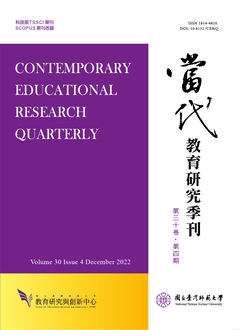

數學建模強調現實世界與數學世界間的連結(connections),是一種知識統整的數學能力。本研究主旨在分析與瞭解準教師數學建模歷程中的認知因素及轉化機制,以做為師資培育課程發展之參考。研究方法採半結構活動設計方式,觀察蒐集分成五組26位準教師的建模過程,進行質性分析。
研究結果發現:一、影響準教師建模的認知因素有五項,包括:(1)經驗提取;(2)簡化與假設;(3)物件抽取;(4)物件轉化;(5)分析數學物件關係;二、建模過程為一致性,而非跳躍性的思維;三、準教師數學建模轉化方式主要有兩種:(1)物件模式,著重真實情境的物件;(2)操作模式,著重物件的數學關係。本研究依據研究結果,對數學建模課程活動提出具體建議,可做為未來師資培育數學建模課程設計之參考。
Mathematical modeling stresses the connection between the real world and mathematics, and it is a mathematical literacy related to knowledge integration. This study aims to analyze and understand the cognitive factors and translation mechanisms of pre-service teachers in their processes of mathematical modeling. The results can be considered in developing teacher education programs. The method is to use semi-structural activities, to observe the modeling process of 26 pre-service teachers divided into 5 groups. Qualitative analysis is employed afterwards.
<p> The results as what follows: Firstly, there are five cognitive factors that affect pre-service teachers’ modeling process: (a) experience recalling, (b) simplification and supposition, (c) object abstraction, (d) object translation, and (e) analysis of relations among mathematical objects. Secondly, the whole process of modeling is coherent. Thirdly, there are two ways of translation for pre-service teachers in their modeling processes: (a) object model, a model consisting of physical conditions and focusing on physical objects, and (b) action model, a model consisting of mathematical objects, but focusing on actions on those objects. This study gives concrete suggestions to mathematical modeling courses according to its results, and can be considered in designing mathematical modeling courses for teacher education programs.

本著作係採用創用 CC 姓名標示-非商業性 3.0 台灣 授權條款授權.
本刊國立台灣師範大學教育研究與創新中心
106台北市和平東路一段162號 | 電話: 02-7749-3670 | E-mail: cerecerq@gmail.com
教創中心 | 師大 | 電子報 | 線上投審系統
本刊由國家科學及技術委員會人文社會科學研究中心補助經費
© 2014 CERI-NTNU
